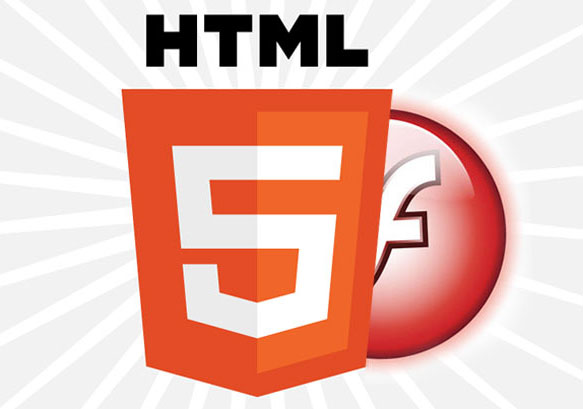Many believe that HTML5 is the death of Flash. In some areas on the web, this may be true. But when it comes to games and interactive videos, which may be housed in a dedicated server hosting facility because of their high traffic volumes, Flash will continue to be the medium of choice. However, many applications that have been implemented with Flash in the past can easily be replaced with HTML5. Plus, its very nature also offers some advantages over Flash. Let’s take a look at a couple.

1. Displaying Video
One of the best features of HTML5 is its native video element, video. The tag permits video files to play without the need for a plugin such as QuickTime and Flash. This is because browsers supporting the tag use a native video codecs. For now, these codecs are OGG and H.264.
OGG is an open standard multimedia format that is free for anyone to use. Because it is free, anyone wishing to use it does not have to worry about licensing restrictions that come with other formats.
H.264 is a video format that is commonly used for high compression video. For the internet, it is used for streaming video. Sites such as YouTube and Vimeo currently support it.
As for browser support, the latest version of Firefox, Chrome, Safari, an Opera support the tag. Internet Explorer support is only available in IE9. In addition, the support for codecs among the browsers varies. Firefox and Opera support OGG, while Safari and IE9 support H.264. Chrome, on the other hand, supports both.
2. Support in iPad
Many of the leading mobile devices like the iPad do not support Flash. The reason for its absence has to do with the power drain that it has on these devices. This is the main reason that Apple and many other mobile devices do not support Flash content. Despite this, there are apps available that allow devices like the iPad to play Flash video.
However, for those looking to stay away from developing with Flash, HTML5 opens up another avenue for deploying videos on websites. Because of its native support for video, HTML5 allows mobile device users to enjoy watching video without worrying that the power in their devices will quickly drain.
It’s also worth mentioning that the latest versions of the iPhone, Android and other mobile devices support the new tag.
3. HTML5 – Language of the web
Websites structure and form are built upon HTML. Because of this, using HTML5’s video element should allow designers to more easily integrate video into the look and feel of websites and deploy it more quickly on your VPS hosting provider.
Another reason developers may choose HTML5 over Flash has to do with the open nature of HTML5. Flash, a closed platform, is owned by Adobe. Since HTML5 is based on a standards project, this allows more developers to work with it, and hopefully spur new innovation.
In short, HTML5 new elements offer some intriguing advantages over Flash, with its power friendly usage on mobile devices being a big advantage. However, given Flash’s dominant nature on the web and a new version of the software that is suppose to have better CPU performance, Flash may not be dead just yet.

